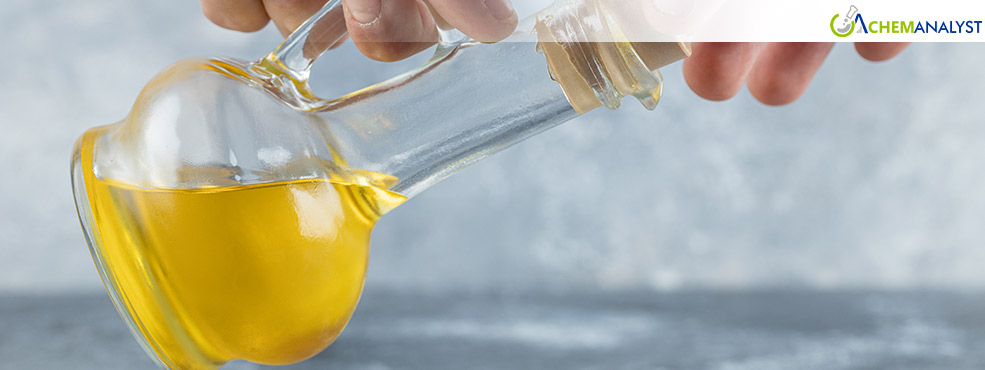Welcome To ChemAnalyst

The oleic acid market experienced considerable price swings through April, with industry experts anticipating a stable price rise in May after a significant fall in the last month. Oleic acid, an essential ingredient in a wide range of industrial uses, has been under pressure as a result of intricate supply-demand dynamics in key producing and exporting countries.
Key Points:
Oleic acid is a pillar product in several industries because it is a great moisturizer, lubricant, and emulsifier. The personal care and cosmetics industry substantially depends upon oleic acid for moisturizers, lotions, and cleaning products where oleic acid increases skin moisture and elasticity. In the pharmaceutical industry, oleic acid serves a vital role as an excipient in medication formulation, enhancing absorption rate and bioavailability. Oleic acid is used in industrial processes as lubricants, metal working fluids, and textile auxiliaries where its property of reducing friction delivers valuable operational advantage.
The April decrease in oleic acid prices is mainly due to an oversupply situation in the oleochemical industry. Downstream planters with big plantation companies faced pressure from sluggish world demand, especially as competition escalated from Indonesian and Chinese exporters. Industry players report that oleic acid pricing has been severely affected as production keeps running ahead of present market demands.
The Oleic acid markets are being walked at present in difficult circumstances. Temporary suspension of US tariffs for three months was permitted, during which the customers stockpiled large inventories, adding to the price fall seen in April.
This excess supply situation has hit Malaysian producers especially hard, since Indonesia's leadership with more than 23 million tonnes yearly production capacity overwhelms Malaysia's 2.6 million tonnes. The price trend of oleic acid has tracked raw material patterns closely, particularly palm oil prices in key producing areas.
Based on statistics provided by the Malaysian Palm Oil Association (MPOA), April 1-20, 2025 palm oil production grew by 19.88% over March. Peninsular Malaysia production was up by 24.05% month to month, and East Malaysian output grew by 14.71%. This increased availability of raw materials had a direct impact on oleic acid prices during the month of April.
Currency movements also added to the pricing pressures for oleic acid, with the Indonesian Rupiah rising 1.08% against the US Dollar in April, and the Malaysian Ringgit rising by 2.7% over the same period. The currency movements reduced exports competitiveness, hence contributing to the short-term downturn in oleic acid prices.
In spite of April's price reduction, oleic acid enjoys solid year-round demand with significant seasonal fluctuations. Though winter months are generally responsible for higher demand for oleic acid in cosmetics and personal care applications, summer uses in food industries—specifically salad dressings, marinades, and cooking sprays—offer balancing support. This seasonally oriented pattern of demand is likely to support stabilizing oleic acid prices heading into May.
A stabilization and rising trend in oleic acid prices are expected as May sets in. The season transition period is normally characterized by more balanced demand conditions for oleic acid among its diverse applications. For oleic acid manufacturers and buyers, the expected stabilization presents a window of opportunity to reassess procurement plans and, if possible, negotiate favorable terms before expected price hikes.
We use cookies to deliver the best possible experience on our website. To learn more, visit our Privacy Policy. By continuing to use this site or by closing this box, you consent to our use of cookies. More info.
